Crankcase pressure refers to the amount of pressure within the engine’s crankcase, which is critical for maintaining its internal balance and efficiency. Managing crankcase pressure is essential for engine health, as excessive pressure can lead to oil leaks, reduced engine performance, and ultimately catastrophic engine damage.
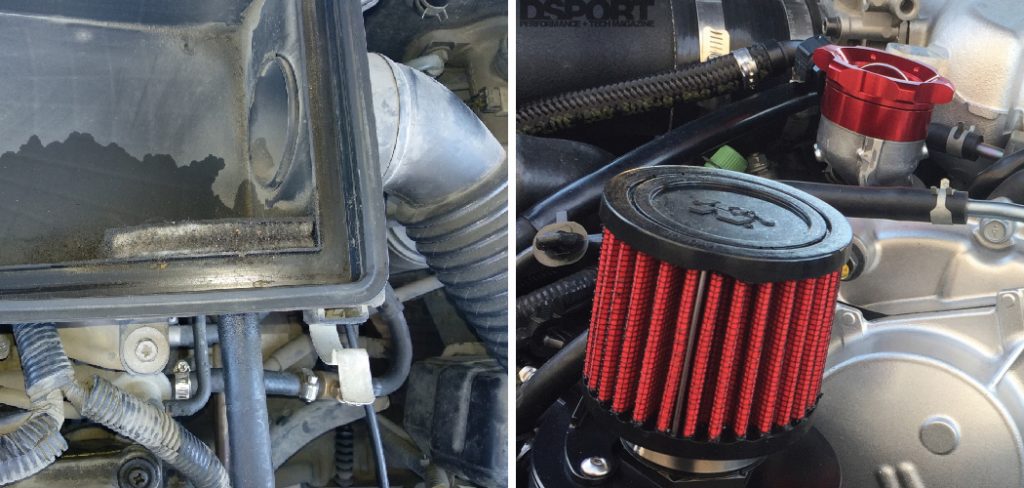
Understanding how to fix excessive crankcase pressure is crucial for vehicle maintenance and avoiding expensive repairs. This article will explore the signs, causes, and solutions for excessive crankcase pressure, providing step-by-step guidance for diagnosis, internal and external repairs, and preventive strategies to ensure your engine runs smoothly.
Symptoms of Excessive Crankcase Pressure
Excessive crankcase pressure can manifest through numerous alarming symptoms that drivers should not ignore. One common indicator is the presence of oil leaks, especially around seals and gaskets that can no longer contain the increased pressure inside the crankcase.
Another symptom is dipstick blow-out, where the dipstick is pushed out of its tube due to the pressure build-up, often followed by oil spray. A rough idle, characterized by erratic engine performance when the vehicle is stationary, can also suggest issues with crankcase pressure.
These symptoms can indicate that unburned fuel, exhaust gases, or air is being forced into the crankcase, exceeding its capacity to maintain optimal pressure levels. Prompt diagnosis and repair are essential to prevent the aggravation of these issues, which can lead to severe engine damage, and ensure your vehicle continues to operate safely and efficiently.
Causes of Excessive Crankcase Pressure
Internal Causes
Understanding the internal factors that contribute to excessive crankcase pressure is pivotal for maintaining engine health. Below are some of the most common internal causes:
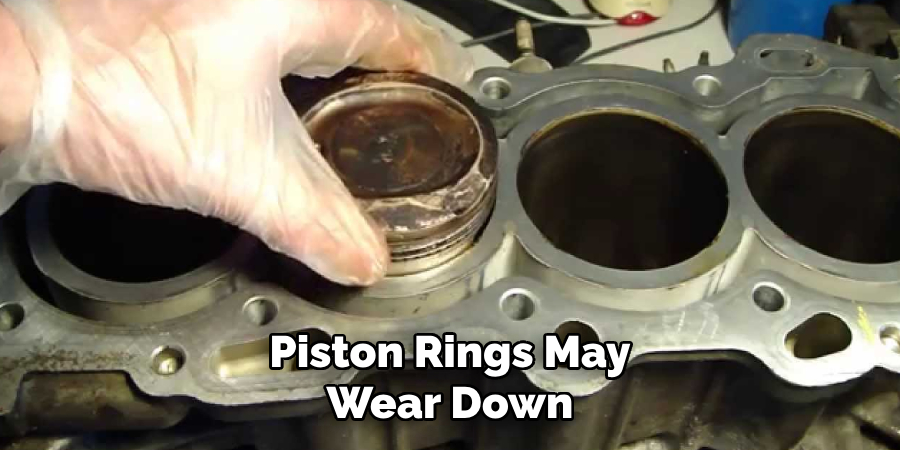
- Worn Piston Rings: Over time, piston rings may wear down and lose their ability to proficiently seal the gap between the piston and the cylinder wall. This wear diminishes their sealing effectiveness, resulting in combustion gases, commonly known as blow-by, entering the crankcase and elevating internal pressure. Regular inspections and timely replacements are essential to avoid this escalation.
- Valve Issues: The engine valves play a critical role in the smooth operation of an engine, and any malfunction, such as sticking or leakage, can contribute to pressure build-up. Stuck valves prevent the proper release of gases, while leaky valves may allow the passage of unburned fuel and exhaust into the crankcase, aggravating the pressure.
- Piston Ring Lands: The piston ring lands are the horizontal surfaces on the piston where the rings sit. If these lands become damaged, possibly due to debris or improper installation, they can distort ring alignment and compromise the seal, permitting blow-by gas to escape into the crankcase.
- Cylinder Bore Scoring: Scoring in the cylinder bore—an outcome of wear, inadequate lubrication, or the ingress of contaminants—impairs the smooth surface necessary for the rings to seal effectively against the cylinder walls. Substantial scoring can exacerbate ring wear and hasten the development of excessive crankcase pressure.
- Blow-By from Turbochargers: In turbocharged engines, the additional pressure from the turbo can exacerbate blow-by, especially if the piston rings or other components are compromised. The efficiency of turbochargers themselves is paramount to maintaining proper pressure within the crankcase.

External Causes
The external elements influencing crankcase pressure should also not be overlooked. They are often easier to identify and rectify:
- Clogged PCV Valve: The Positive Crankcase Ventilation (PCV) valve regulates the release of gases from the crankcase. If it becomes clogged, it fails to adequately relieve pressure, leading to a buildup that can affect engine performance.
- Faulty PCV Hoses: Similar to the PCV valve, the hoses connected to it must also be clear and undamaged to facilitate the correct ventilation of the crankcase. These hoses’ leaks, restrictions, or disconnections can severely impair this essential venting process.
- Overfilled Crankcase: Exceeding the recommended oil level in the crankcase can have the unintended consequence of raising internal pressure. The excess oil can be whipped into a foam by the engine components, which compromises lubrication, hampers heat dissipation, and increases pressure.
- Breather Cap Malfunction: The breather cap assists in the maintenance of proper air exchange in the crankcase. A malfunctioning cap may allow unmetered air to enter or may not vent air adequately, disrupting the pressure balance within the engine.
Diagnosing Excessive Crankcase Pressure
Before attempting any repairs, a clear and accurate diagnosis of excessive crankcase pressure is crucial. It ensures that any fixes are targeted correctly, avoiding unnecessary costs and time spent on addressing symptoms rather than the root cause.
The diagnosis starts with basic visual inspections, checking for obvious signs of oil leaks, and measuring oil consumption. This can include examining gaskets, seals, and the PCV valve for blockages or damage that might contribute to pressure build-up.
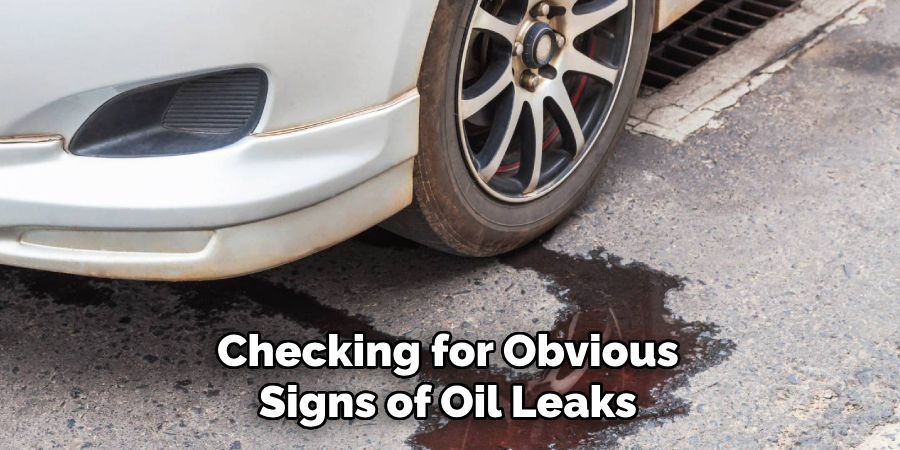
For those with mechanical expertise, more advanced diagnostic tools can be employed. A compression test, for instance, can reveal issues with the engine’s pistons, rings, and valves by measuring the pressure of each cylinder’s compression. Meanwhile, a leak-down test pressurizes the cylinder and measures how well it holds pressure, highlighting any leaks. These tests provide insight into the internal state of the engine and can pinpoint where the pressure issues are originating.
Despite this, the complexity of modern engines means that some diagnoses are best left to professionals. Expert mechanics have specialized tools and experience that allow them to interpret subtle signs and symptoms of excessive crankcase pressure. They can also safely perform diagnostic tests without risking further damage to the engine.
Consulting with a professional is particularly advisable for complex cases of crankcase pressure issues. Remember, engines are intricate systems that require a thorough and knowledgeable approach to diagnosis and repair, particularly when it comes to a symptom as potentially serious as excessive crankcase pressure.
How to Fix Excessive Crankcase Pressure: Repairing Internal Causes
Addressing internal engine problems requires a thorough understanding of the components involved and the severity of the damage.
Worn Piston Rings
When dealing with worn piston rings, the primary solution is replacement. Since piston rings seal the combustion chamber and ensure proper oil regulation around the piston, their integrity is vital. To replace piston rings, the procedure involves removing the engine block and disassembling the relevant components – a task that demands precision and a clear understanding of engine assembly.
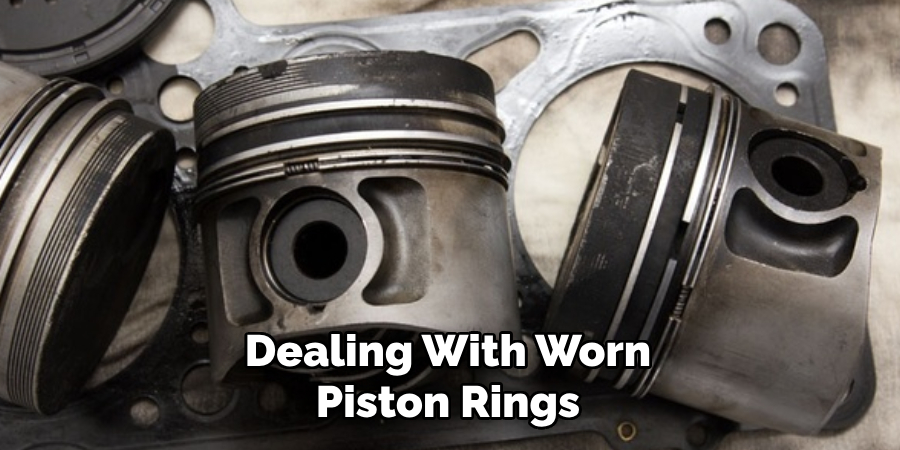
In cases where the damage is extensive, the engine might require a rebuild. This could involve resurfacing or replacing additional damaged parts, which is considerably more intensive and costly. Such complexity underscores the need for professional repair to ensure the engine operates safely and efficiently post-repair.
Valve Issues
For valve issues such as sticking or leakage, the course of action typically starts with cleaning or replacing the affected valves. Stuck valves can often be remedied using a solvent to dissolve build-up or, if the problem persists, grinding or lapping to restore the seal. If valves are found to be damaged beyond repair, replacement is necessary. Valve seats may also require reconditioning to ensure a tight seal, which might involve cutting or reaming procedures.
Complex valve repairs can have far-reaching implications for engine functionality, thus highlighting the importance of professional assistance—especially when specialized equipment like pneumatic valve compressors is required.
Piston Ring Lands and Cylinder Bore Scoring
The repair of piston ring lands and cylinder bore scoring will largely depend on the severity of the damage and the engine type. For minor scoring, honing can refresh the cylinder walls and restore a proper seal surface for the rings. However, significant scoring may necessitate sleeving the cylinder—involving inserting a new liner within the bore to provide a fresh sealing surface.
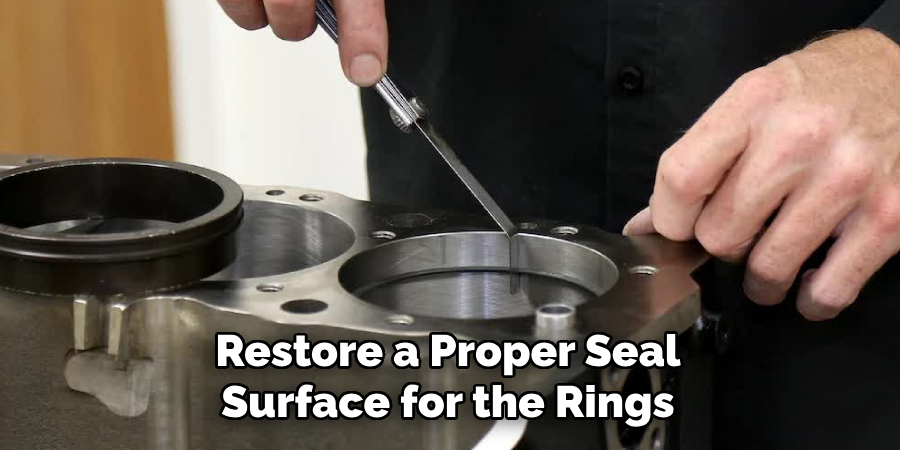
Extensive damage to either the piston ring lands or the cylinder bores may warrant a full engine rebuilding process, especially in high-performance or extensively worn engines. This process should be carried out by a professional to ensure the engine’s integrity and reliability.
Blow-by from Turbochargers
Blow-by issues in turbocharged engines often point to a deeper problem, either with the turbocharger itself or with other engine components affected by the increased pressure and heat that turbochargers introduce. Consulting specific repair guides for your engine’s turbo system is essential for accurate troubleshooting, which may involve checking for shaft play, damaged seals, or impeller damage.
Given the precision of turbocharger components and their calibration requirements, relying on a professional for diagnosis and repair is especially critical. This ensures that not only is the immediate problem addressed but that it is done so without introducing new issues—which can be costly and potentially dangerous if left unaddressed.
Given the complexity and importance of accurately repairing internal engine problems, seeking professional assistance is often the wisest course of action. A well-executed repair by a reputable mechanic or technician ensures that your engine continues to function at peak performance, ultimately extending its life and maintaining its reliability on the road.
How to Fix Excessive Crankcase Pressure: Repairing External Causes
The external factors contributing to crankcase pressure problems can often be simpler to diagnose and remedy than internal issues. Here’s how to address some common external causes:
Clogged PCV Valve
The Positive Crankcase Ventilation (PCV) valve is essential for directing fumes out of the crankcase and back into the combustion cycle. When it becomes clogged, it can cause increased pressure and a myriad of engine issues. To clean a PCV valve, remove the valve, shake it, and listen for a rattle indicating it’s not stuck.
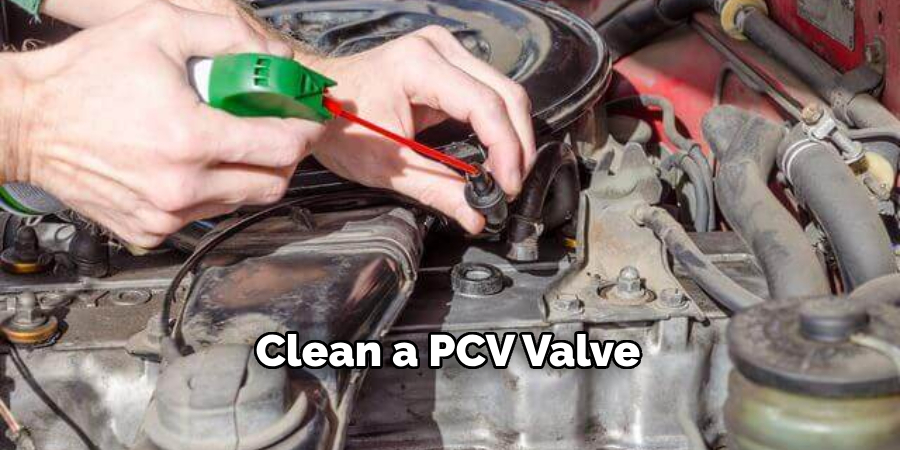
If there’s no rattle, use an appropriate cleaner to dissolve the gunk, then rinse and dry before reinstallation. However, professional replacement is recommended for optimal performance or when dealing with complicated systems.
Faulty PCV Hoses
Inspect PCV hoses regularly for signs of wear or damage, such as cracks or brittleness. To replace a damaged hose, first determine the exact type and size you need since hoses can vary in diameter and length. Consult the vehicle’s manual or a professional to ensure compatibility with your engine’s system. When replacing the hoses, ensure a secure fit to prevent leaks. For complex systems with hard-to-access hoses, seek professional help to ensure proper handling.
Overfilled Crankcase
Excessive oil in the crankcase can cause elevated pressure, leaks, and damage. To correct this, carefully drain the excess oil until the level meets the manufacturer’s recommended capacity. It’s crucial to follow these specifications to avoid issues. Regular oil changes should not be overlooked, as they are essential for maintaining optimal engine performance and longevity.
Breather Cap Malfunction
A faulty breather cap can also contribute to crankcase pressure buildup. Test the breather cap for proper operation or look for obvious signs of damage. If it’s faulty, finding the correct replacement involves knowing the type of cap compatible with your vehicle. There are different designs, such as vented or non-vented, and choosing the right one is essential for system integrity. For advice on the specific type required for your car, consult a mechanic or repair manual.

The key takeaway for dealing with external causes is that, while basic maintenance can be a DIY task, consulting a professional is crucial when faced with complicated systems or when specialized knowledge is required. This ensures that the repairs are conducted safely and correctly, keeping your engine running smoothly.
That’s it! You’ve now learned how to fix excessive crankcase pressure and the importance of seeking professional assistance for internal engine problems. With proper maintenance and timely repairs, your vehicle’s engine will continue to perform at its best, providing you with a smooth and reliable driving experience for years to come. Remember to always prioritize safety and accuracy when dealing with any mechanical issues in your car.
Preventive Measures
Regular maintenance is the bedrock of engine longevity and efficiency. One of the simplest yet most crucial practices is timely oil changes. Engine oil lubricates, cleans, and cools internal components; over time, it degrades and becomes less effective. Using high-quality engine oil that meets the manufacturer’s specifications can significantly reduce wear and prevent sludge buildup.
Equally important is the replacement of air filters. A clean air filter ensures an optimal mixture of air and fuel, which is critical for the engine’s performance and longevity. Clogged filters can lead to increased fuel consumption and reduced power output.
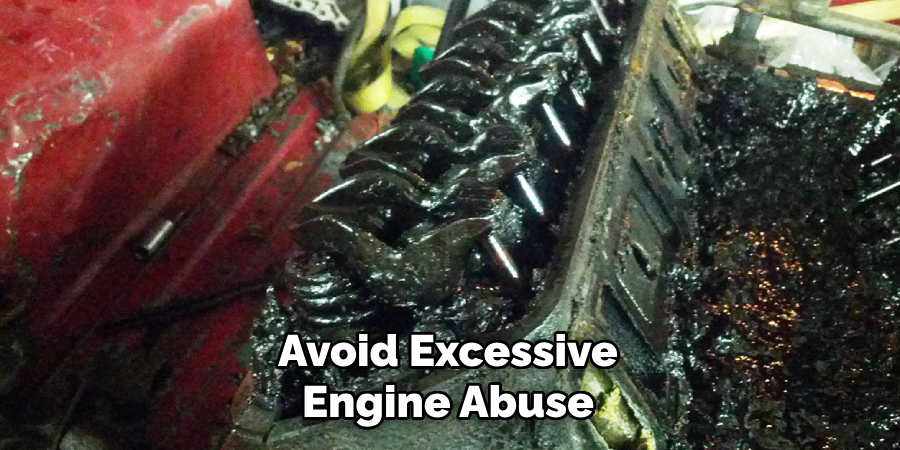
To prevent mechanical strain, it is vital to avoid excessive engine abuse, and overloading is vital to avoid excessive engine abuse and overloading to prevent mechanical strain. Operating your engine within its designed capacity will forestall premature wear and prolong its lifecycle. Paired with this, adhering to proper driving practices and not pushing the engine harder than necessary can stave off a host of problems.
Early detection of issues is essential. Monitoring symptoms such as unusual engine noises, performance drops, or fluid leaks can provide early warning signs of underlying problems. Addressing these quickly can thwart more significant, costly repairs down the line.
Adopting these preventive measures will not only bolster the reliability and performance of your engine but also preserve its value and ensure your safety on the road.
5 Benefits of Fixing Excessive Crankcase Pressure
Your vehicle’s engine is a precision instrument, delicately balanced to provide the power and efficiency you depend on. However, when crankcase pressure becomes excessive, that balance is disrupted, potentially leading to a host of performance issues.
If you’re a car enthusiast or a DIY tech working on engines, understanding the importance of maintaining the right crankcase pressure is essential for optimal vehicle health. We’ll walk you through five key benefits of ensuring your engine’s crankcase pressure is at the correct level.
1. Improved Engine Performance
Maintaining the Correct Pressure Equals Smooth Operation
Reduced Strain on Components
Excessive crankcase pressure can force oil out of seals and gaskets, leading to oil leaks that dirty your vehicle and leave the engine components without proper lubrication. Fixing this pressure issue reduces the strain on various engine parts, such as the crankshaft, camshaft, and valvetrain, which can lead to smoother and quieter engine operation.
Enhanced Fuel Efficiency
An improperly pressurized crankcase can contribute to increased air resistance, like a parachute slowing your car down, by pushing oil into places it shouldn’t be. By eliminating this drag, engines can run more efficiently, translating to better fuel economy and potentially saving you money at the pump.
2. Extended Engine Lifespan
Protecting Your Investment, One Mile at a Time
Prevention of Internal Damage
Excessive crankcase pressure has a domino effect on engine integrity, including blowing out valve cover gaskets, rear main seals, and more, leading to conditions like oil sludge, rapidly degrading an engine’s internal components. Preventing excessive pressure avoids these issues and maintains a cleaner, healthier engine.
Reduced Wear and Tear
A well-maintained pressure system ensures that components receive the correct amount of oil for lubrication, keeping them from rubbing against each other with minimal protection or, worse, drying. As a result, the chance of worn components or complete failures is significantly reduced, potentially adding years to your engine’s life.
3. Enhanced Safety
A Reliable Engine is Essential for Safe Travels
Decreased Risk of Oil Leaks
Severe oil leaks, often associated with high crankcase pressure, can lead to dangerous conditions on the road by reducing traction, both for the leaking vehicle and for others on the road. Maintaining the proper crankcase pressure helps seal potential failure points, ensuring that oil stays where it’s meant to be.
Improved Overall Engine Reliability
An engine that doesn’t have to work harder than it’s designed to maintain a more consistent output, which means more predictable performance on your daily drives or during critical situations. Additionally, you’ll be avoiding potentially catastrophic failures that can occur when components are under excessive stress due to poor pressure management.
4. Cost Savings
Money Saved is Money Earned, Especially in Car Maintenance
Lower Maintenance Expenses
When components are subjected to additional pressure, they wear out faster, leading to more frequent trips to the mechanic for replacements or repairs. A properly pressurized crankcase system extends the life of these components, keeping many of those maintenance expenses in your pocket.
Avoidance of Major Repairs
Unfortunately, when components fail due to high-pressure conditions, the repairs can escalate quickly from simple part replacements to full engine overhauls. By ensuring proper crankcase pressure, you’re steering clear of a potential financial pitfall brought on by prolonged neglect.
5. Environmental Impact
Conscious Car Care for a Greener World
Reduced Emissions
Engines that run efficiently produce fewer harmful emissions, and maintaining the correct crankcase pressure is a part of that equation. By fixing your system, you’re contributing to cleaner air and a better environment for everyone.
Eco-Friendly Operation
A car with a healthy crankcase is more fuel-efficient, which means less fossil fuel consumption and a smaller carbon footprint. Even small changes at the individual level can add up to significant environmental benefits over time.
Conclusion
In closing, understanding how to fix excessive crankcase pressure is critical for maintaining your vehicle’s performance and longevity. Ignoring these issues can lead to severe engine damage, making professional diagnosis and repair indispensable for complex concerns. Investing in routine checks and addressing problems immediately safeguards your engine’s health.
Embrace preventive measures such as regular oil changes, air filter replacements, and avoiding engine overuse to avert potential issues. By honoring these practices, vehicle owners can enjoy a reliable ride and peace of mind on the road.

About
JeepFixes Team is a skilled author for Jeep Fixes, bringing 6 years of expertise in crafting a wide range of jeep fixes. With a strong background in jeep fixes work, JeepFixes Team’s knowledge spans various types of fixtures, from decorative pieces to functional hardware, blending precision with creativity. His passion for jeep fixes and design has made him a trusted resource in the industry.
Professional Focus:
Expert in Jeep Fixes : JeepFixes Team aesthetic specializes in creating durable and innovative jeep fixes, offering both appeal and functionality. His work reflects a deep understanding of jeep fixes techniques and materials.
Sustainability Advocate : He is dedicated to using sustainable practices, ensuring that every fixture is crafted with eco-friendly methods while maintaining high-quality standards.
In his writing for jeep fixes, JeepFixes Team provides valuable insights into the latest trends, techniques, and practical advice for those passionate about jeep fixes, whether they are professionals or DIY enthusiasts. His focus on combining artistry with engineering helps others discover the true potential of jeep in design.
